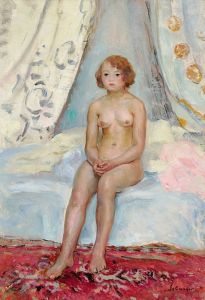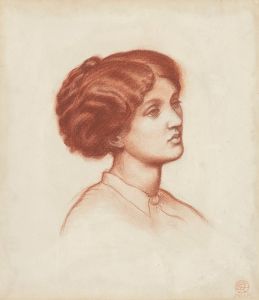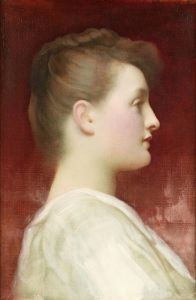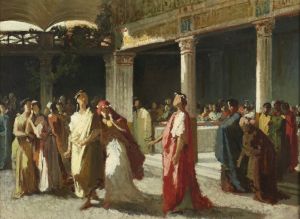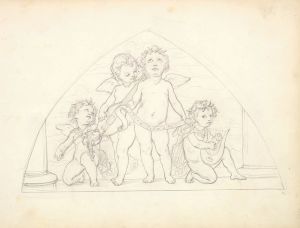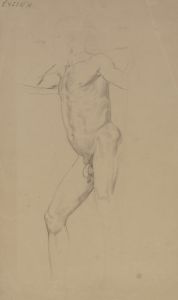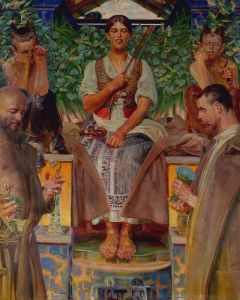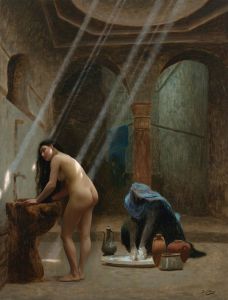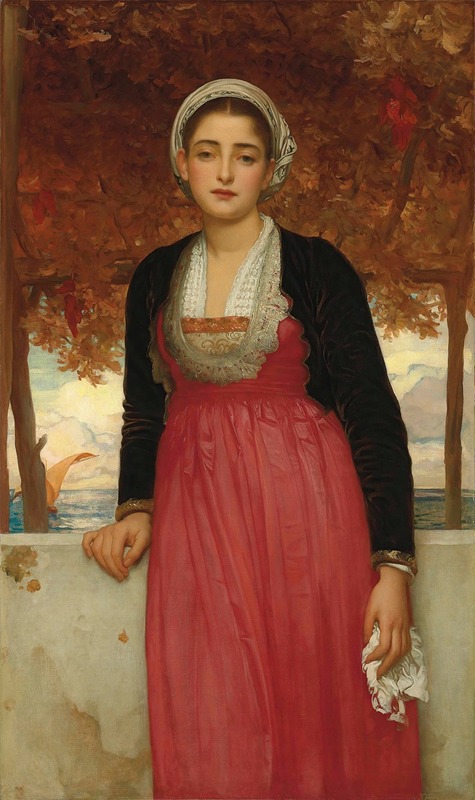
Amarilla
A hand-painted replica of Frederic Leighton’s masterpiece Amarilla, meticulously crafted by professional artists to capture the true essence of the original. Each piece is created with museum-quality canvas and rare mineral pigments, carefully painted by experienced artists with delicate brushstrokes and rich, layered colors to perfectly recreate the texture of the original artwork. Unlike machine-printed reproductions, this hand-painted version brings the painting to life, infused with the artist’s emotions and skill in every stroke. Whether for personal collection or home decoration, it instantly elevates the artistic atmosphere of any space.
Frederic Leighton, a prominent British artist of the 19th century, is renowned for his contributions to the Victorian art scene, particularly through his association with the Aesthetic Movement. One of his notable works is "Amarilla," a painting that exemplifies his mastery in capturing beauty and emotion through classical themes and meticulous technique.
"Amarilla" is a testament to Leighton's skill in portraiture and his ability to infuse his subjects with a sense of grace and serenity. The painting features a young woman, Amarilla, depicted with a contemplative expression. Leighton's use of soft, harmonious colors and delicate brushwork highlights the subject's ethereal beauty, a characteristic feature of his style. The composition is carefully balanced, with attention to detail that draws the viewer's eye to the subject's face, emphasizing her introspective gaze.
Leighton's approach to painting was heavily influenced by his academic training and his exposure to the art of the Renaissance and classical antiquity. This influence is evident in "Amarilla," where the artist's focus on idealized beauty and form reflects the classical ideals that were central to his work. The painting's serene atmosphere and the subject's poised demeanor are reminiscent of the works of the Old Masters, whom Leighton admired and studied extensively.
Throughout his career, Leighton was associated with the Royal Academy, where he served as President from 1878 until his death in 1896. His leadership and influence were instrumental in shaping the direction of British art during this period. "Amarilla," like many of his works, was likely exhibited at the Royal Academy, where it would have been appreciated by both critics and the public for its technical excellence and aesthetic appeal.
Leighton's dedication to his craft and his pursuit of beauty in art earned him widespread acclaim during his lifetime. He was knighted in 1878 and later ennobled, becoming the first artist to be granted a peerage, a testament to his significant contributions to the arts. His works, including "Amarilla," continue to be celebrated for their elegance and refinement, embodying the ideals of the Aesthetic Movement, which sought to prioritize beauty and sensory experience in art.
Today, "Amarilla" is part of the collection of works that showcase Leighton's legacy as a leading figure in Victorian art. His paintings are held in high regard by art historians and enthusiasts alike, who appreciate his ability to blend classical influences with contemporary sensibilities. Leighton's work remains a subject of study and admiration, reflecting the enduring appeal of his artistic vision and the timeless beauty he sought to capture on canvas.







